ARTICLE AD BOX
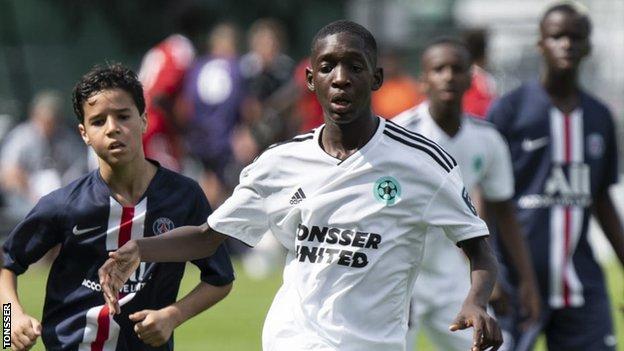 Tonsser United - a team of youth players from different amateur clubs - take on Paris St-Germain's academy in August 2019
Tonsser United - a team of youth players from different amateur clubs - take on Paris St-Germain's academy in August 2019Simon Hjaere was nervous.
As the late August sun beat down, he was among a small clutch of spectators gathered on the sidelines in a leafy Parisian suburb. In front of him, two teenage teams trudged out onto the pitch.
One wore the familiar dark blue and red shirt of Paris St-Germain, the Eiffel Tower on the badge.
The other wore white with black trim. Their crest was a basic outline of a football on a neon blue background.
"I was wearing my nerves outside my skin," said Hjaere. "It felt like watching my national team Denmark in a big game.
"It was an experiment. You can have faith in something, you can believe in something, but it still needs 11 kids on a pitch."
The team in white had no history or home ground. The players had only met each other two days before.
But they shared two things. A hunger to prove they were wrongly overlooked. And an app on their phone.
All were users of Tonsser. Founded in 2014 by Hjaere and Peter Holm, the app charts the progress of unsigned youth players. Team-mates and opponents rank each other, upload footage and submit stats.
And since 2019, the best can apply to be part of Tonsser United - the team in white.
Hjaere had pitched the app many times in boardrooms and business meetings. Now his claim, that vast untapped talent lies unrealised outside of professional clubs, was being put to the test on the pitch.

"We looked at football, technology and what was missing," said Holm.
"We couldn't understand why there are around 55,000 professional footballers in the world, who are part of a really over-saturated ecosystem, with companies monitoring stats, cameras filming most of them and a reasonably well-working transfer system. But below that tip of the iceberg there are 100 million youth players who are unmapped.
"It is difficult to identify players and to unlock potential. That was a mystery to us, especially when youth footballers are one of the most aspirational and passionate groups in the world in what they do.
"There seemed to be this mismatch."
The way most clubs bridge the knowledge gap is through old-fashioned social networks. Scouts scour the local leagues, pick up tips from contacts, hustle and keep hush to sign the next big thing.
But sometimes, prospects slip though.
Famously Jamie Vardy was on the books of a Sheffield factory making prosthetic limbs, rather than either of the city's Football League clubs, in his late teens.
West Ham's Michail Antonio was at non-League Tooting and Mitcham at a similar age.
Former England internationals Ian Wright, Chris Waddle, Stuart Pearce and Peter Beardsley were also missed by big clubs at a young age.
Hjaere and Holm think those oversights are inevitable.
For them, scouting systems are vulnerable to bias, blind spots and plain bad luck. If a player puts in a poor performance on a given day, their chance could be gone for good.
But if players rank each other, if a critical mass of users regulates those assessments, if they are backed up by cameraphone footage and validated stats, the "wisdom of the crowd" shines through.
"If you want to find out the best player on the team you need to ask the players who are measuring themselves against each other all the time," says Hjaere.
"Everyone has biases. One is that, as individuals, if we have seen a player being good before, we look for evidence that reinforces that pattern, rather than things that challenge it.
"Clubs think they know everything about their local area but that information comes through individuals with their own subjectivity. Over time, the bias accumulates. Decisions are made on very fragile personal recommendations."
 As director of football, Rasmus Ankersen has spearheaded Brentford's data-driven approach. The Dane combines his role with a position as chairman of FC Midtjylland in his homeland
As director of football, Rasmus Ankersen has spearheaded Brentford's data-driven approach. The Dane combines his role with a position as chairman of FC Midtjylland in his homelandRasmus Ankersen agrees. As director of football at Brentford, he has pioneered a savvy, stats-heavy approach to recruitment that has helped the club punch well above its weight in the Championship and, this season, in the Premier League.
He has just been appointed to the Tonsser board.
"Often in football those judgments on young players are very snappy, they are made on very subjective - and sometimes inaccurate - information," he told BBC Sport.
"It is very difficult to spot talent at that age and accurately predict who is going to make it. There is no getting around that.
"What we see, with the competition for young talent, is a race to the bottom, with clubs making decisions earlier and earlier on younger and younger players. But that increases the risk that you are getting it wrong.
"Scouting reports are subjective. So they don't stand alone for us. We believe in increasing the sample size with lots of different opinions on a player before making a judgement."
Other apps have attempted to bridge the link between unsigned youth players and professional clubs, but none have made the same inroads as Tonsser.
Twenty-three different clubs from across Europe have mined its data to find talent and Ankersen is among investors who have put a total of 15m euros into the company since its inception.
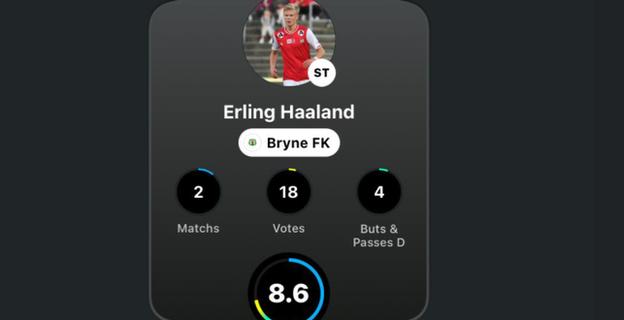 Borussia Dortmund striker Erling Braut Haaland, now one of the most valuable talents in Europe, was a Tonsser user during his time with Norwegian hometown team Bryne FK
Borussia Dortmund striker Erling Braut Haaland, now one of the most valuable talents in Europe, was a Tonsser user during his time with Norwegian hometown team Bryne FKGlobally there are more than 1.3 million young footballers are on the app.
But, as ever in football, the scoreline is the most important.
So, Tonsser United - the team picked from the best of the app's users - holding Paris St Germain to a 1-1 draw that day in the French capital became the most captivating statistic of all.
That same set of players followed up with a win over Lille, a draw against Marseille and a narrow defeat by Juventus.
They didn't win the tournament, but the players, Holm and Hjaere had proved their point.
Their thrown-together team matched some of the strongest academies in Europe. And they have continued to do so, with new sets of players, in tournaments all over the continent.
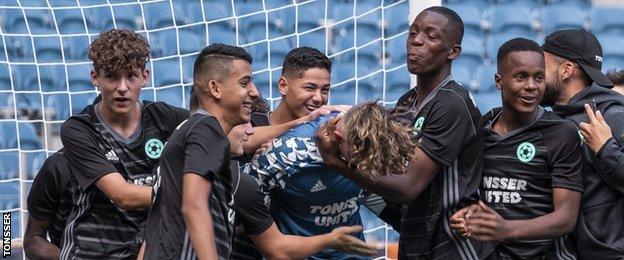 Goalkeeper Enzo Lefel signed for top-flight Angers after his penalty save helped an under-15 Tonsser United side beat Fulham and make the final of the Madewis Cup in 2019
Goalkeeper Enzo Lefel signed for top-flight Angers after his penalty save helped an under-15 Tonsser United side beat Fulham and make the final of the Madewis Cup in 2019Not all of the best players on the app have played for its team.
Borussia Dortmund striker Erling Braut Haaland used the platform when he was playing for Norwegian third-tier side Bryne. Leicester defender Wesley Fofana was on there before signing his first contract with St Etienne. Sampdoria playmaker Mikel Damsgaard, like several of the Danish Euro 2020 squad, was a user in his youth.
All were snapped up by professional clubs without playing for Tonsser United.
But for other players, it has made a difference. Of those that have played for the team, 65% have since been on trials or signed for professional clubs.
Players like Fin Stevens, the 18-year-old full-back on Brentford's books. Or Enzo Lefel, the 17-year-old goalkeeper signed for French top-flight club Angers from non-League Balma after appearing for the team.
"Playing for Tonsser really boosted my confidence," he told BBC Sport. "I could see that I had what it takes to sign for an academy.
"My team-mates are like family. We follow each other on social media and have a Snapchat group.
"It goes off with congratulations messages when one of us signs for a club. Those of us who have got a contract since give advice to those who haven't. We keep motivating each other all the time."
Some need that motivation, help and advice more than others.
Issiaga Camara, a tall, rangy playmaker in the mould of his idol Paul Pogba, was in the team that drew with PSG. His performance drew attention from a host of clubs.
However, incomplete paperwork, following his immigration from Guinea and placement in foster care, meant none could follow up.
Tonsser are helping him as he tries to sort his status and sign a professional deal.
"One of the players said to me that Tonsser United is the national team of the underdog," said Holm.
The underdog has already had some of Europe's fat cats on the run. More than that, it may forever change how talent is picked out in the world's richest game.

- Black and British: David Olusoga looks at an enduring relationship and forgotten history
- 'There is a deeply rooted cultural bias': Steve McQueen's film sheds light on an unofficial segregation policy


 3 years ago
61
3 years ago
61
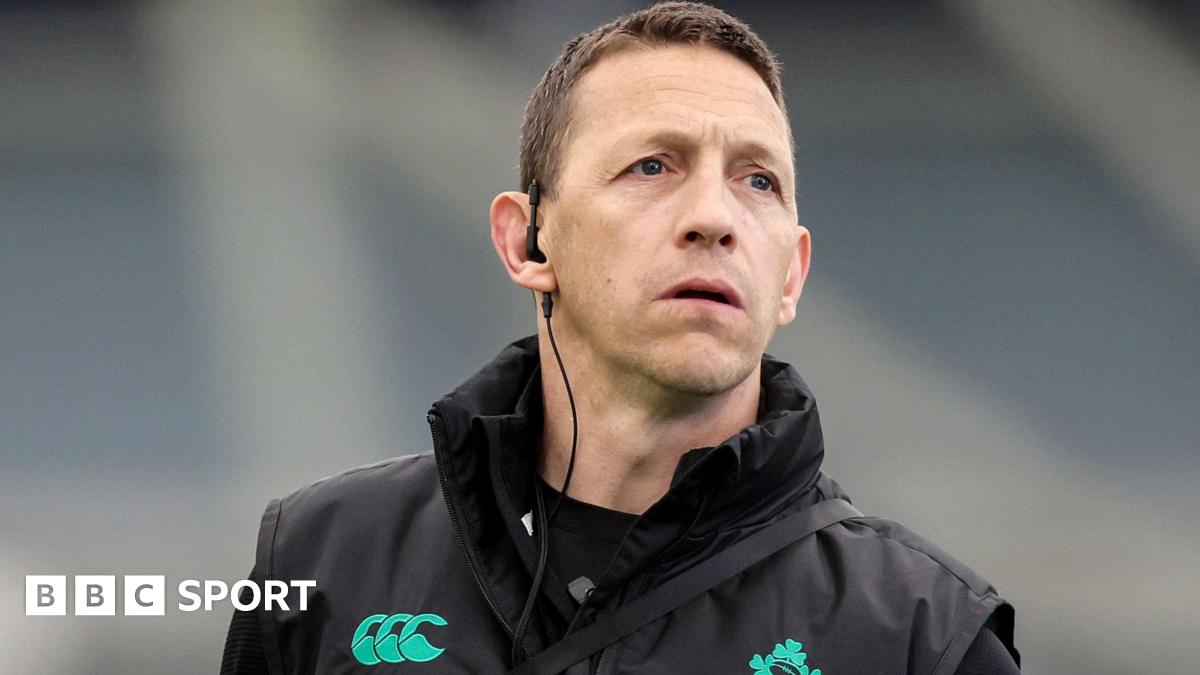
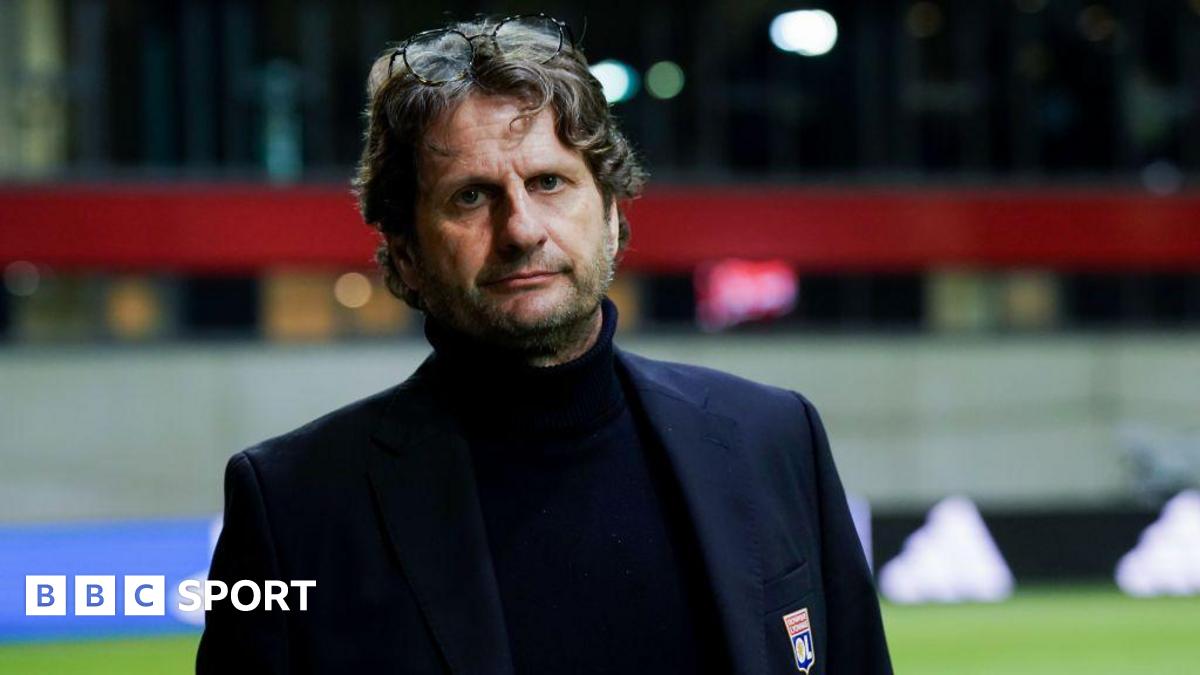
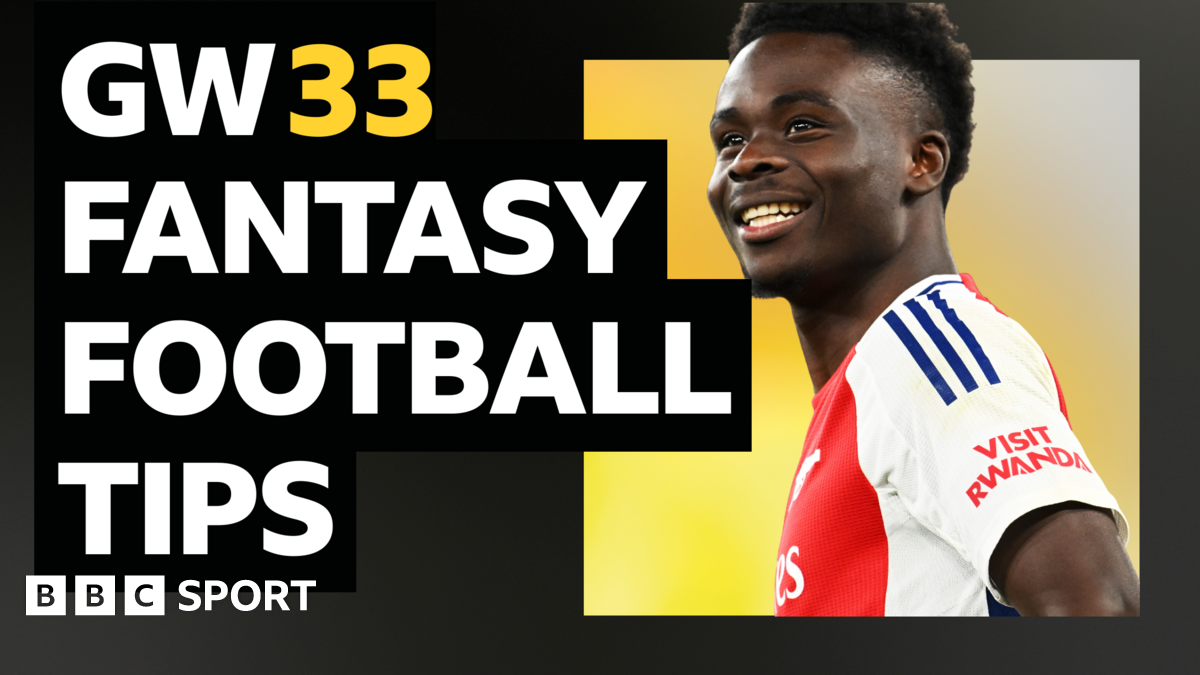





 English (US) ·
English (US) ·